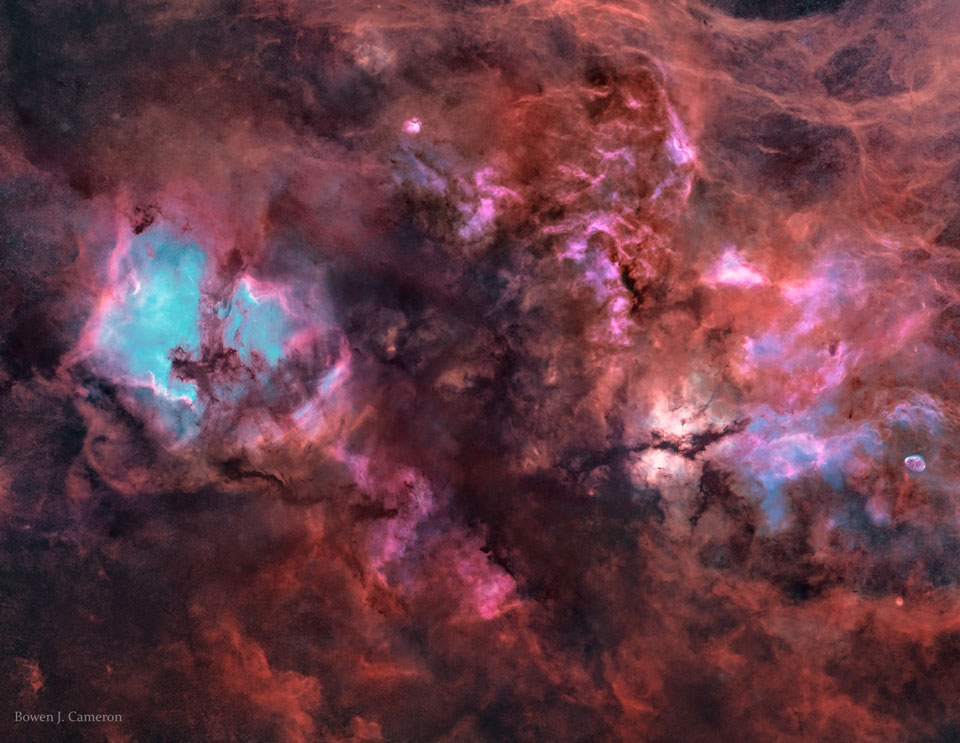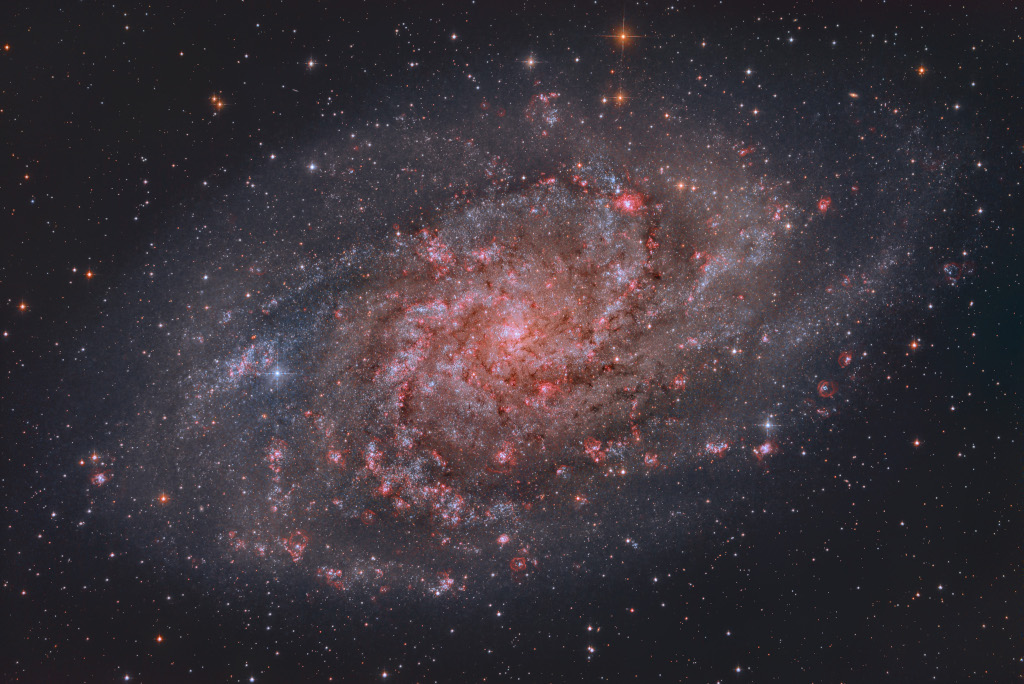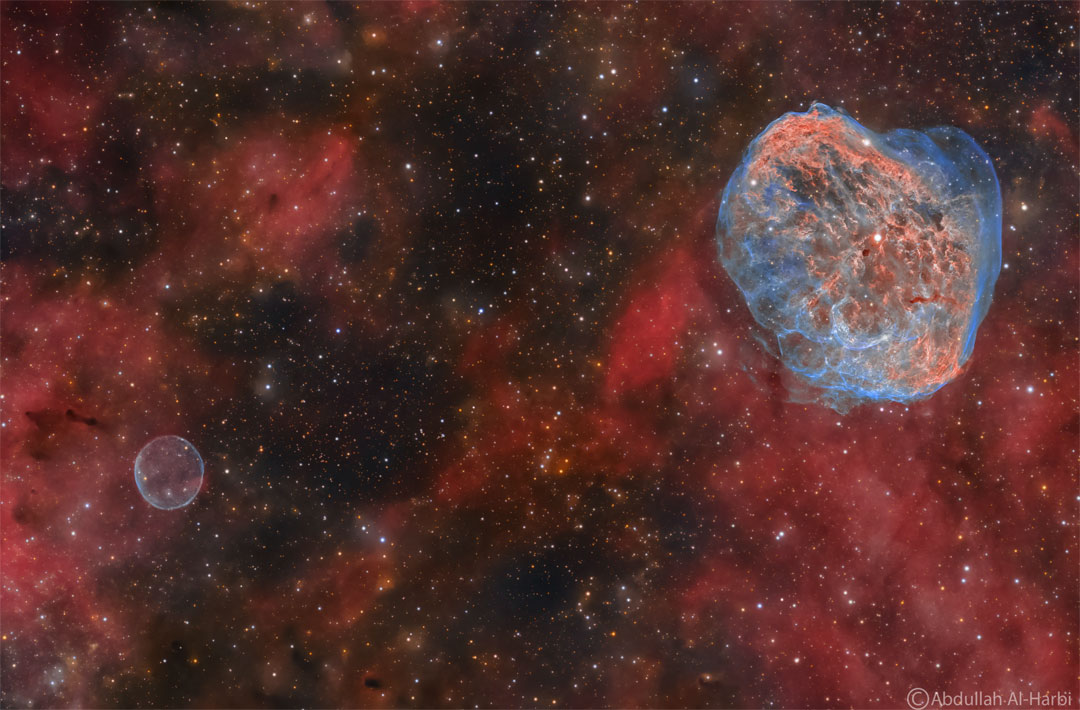2020年11月30日
Cygnus Without Stars
Image Credit & Copyright: Bowen James Cameron
Explanation: The sky is filled with faintly glowing gas, though it can take a sensitive camera and telescope to see it. For example, this twelve-degree-wide view of the northern part of the constellation Cygnus reveals a complex array of cosmic clouds of gas along the plane of our Milky Way galaxy. The featured mosaic of telescopic images was recorded through two filters: an H-alpha filter that transmits only visible red light from glowing hydrogen atoms, and a blue filter that transmits primarily light emitted by the slight amount of energized oxygen. Therefore, in this 18-hour exposure image, blue areas are hotter than red. Further digital processing has removed the myriad of point-like Milky Way stars from the scene. Recognizable bright nebulas include NGC 7000 (North America Nebula), and IC 5070 (Pelican Nebula) on the left with IC 1318 (Butterfly Nebula) and NGC 6888 (Crescent Nebula) on the right — but others can be found throughout the wide field.
Tomorrow’s picture: star forming cluster
移除恒星后的天鹅座
影像提供与版权: Bowen James Cameron
说明: 我们的天空到处都是在散发淡淡辉光的气体,不过,需要透过到灵敏的相机和望远镜才得见。举例来说,这幅宽12度的天鹅座北区影像,呈现我们银河系盘面一带的宇宙星云复合体。这幅组合主题影像,是透过二种滤镜所拍摄,包括只透过激态氢原子发出的可见红光之氢α滤镜,以及主要透过少量电离氧辐射的蓝滤镜。因此,在这幅曝光时间为18小时的影像里,泛蓝区比泛红区高温。此外,影像更经过数位处理,移除众多的点状银河系众星。影像里可辨识的明亮星云,有NGC 7000 (北美洲星云)、左侧的IC 5070 (鹈鹕星云)、右侧的IC 1318 (蝴蝶星云)与NGC 6888 (眉月星云),以及其他散布在这幅广角影像各处的星云。
明日的图片: star forming cluster



